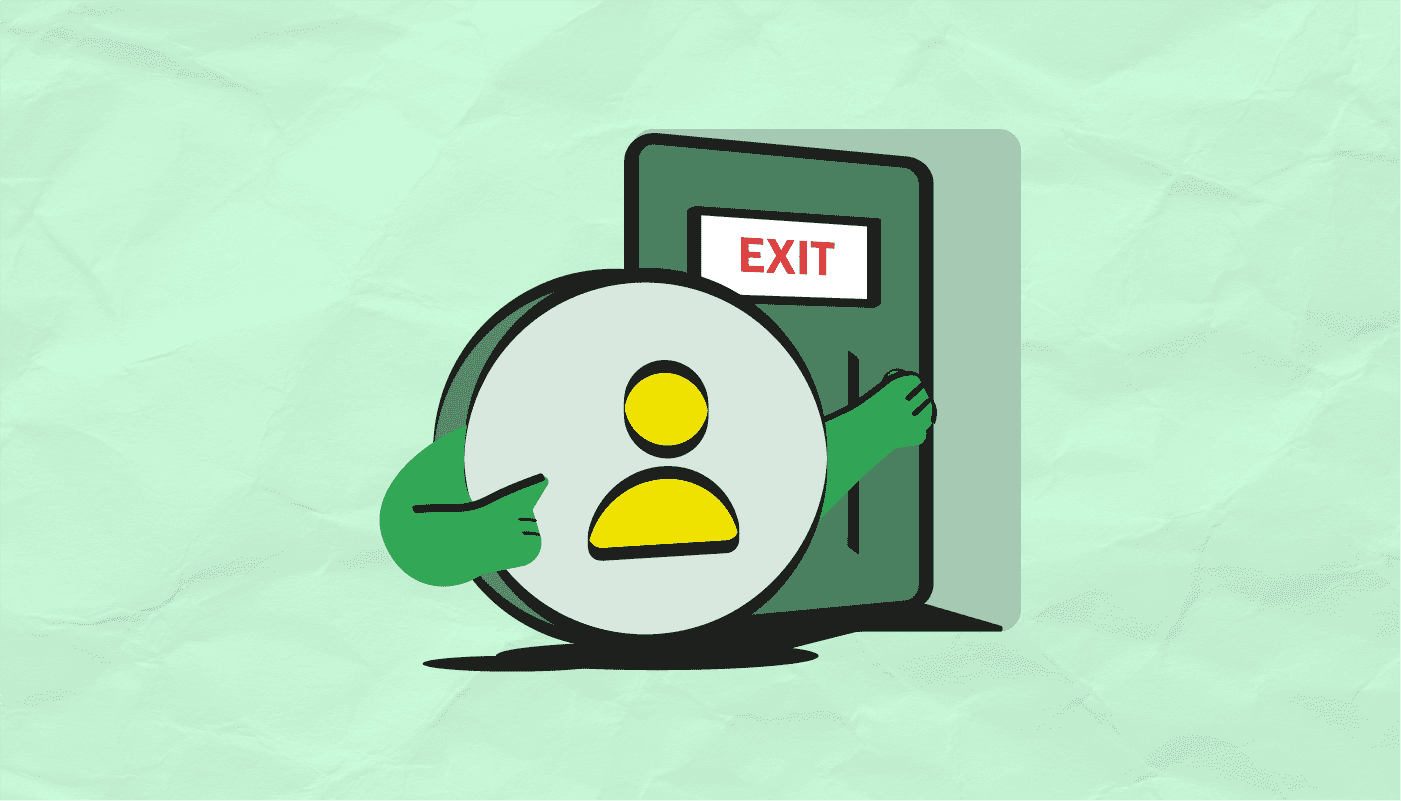- HOME
- Billing basics
- What is customer churn?
What is customer churn?

Picture this: You've invested significant resources in attracting a steady stream of customers. Your marketing campaigns are strategic, your sales team is working tirelessly, and new customers are coming in regularly. But then, you start to notice a troubling trend: those customers are gradually dropping off, half opting for a competitor instead, while the rest simply cancel the service.
In today's fiercely competitive market, this scenario is all too common. Customer churn has become a critical concern for businesses across industries. Studies show that the average churn rate hovers around 10% -15% and at times even higher, highlighting a widespread challenge that impacts revenue streams and threatens the long-term survival of businesses. To make matters worse, acquiring new customers can be up to five times more expensive than retaining existing ones. This means that every lost customer represents not just a dip in current revenue, but also a significantly higher future cost to replace them.
As business owners, understanding and addressing customer churn isn't just important—it's essential. By focusing on customer retention strategies, you can safeguard your revenue and ensure your business thrives in the long run. Let's explore why churn happens and how you can effectively tackle this issue to secure a loyal customer base.
What is customer churn?
Customer churn, also known as customer attrition, refers to the loss of customers who cancel a subscription or end their relationship with an organization over a specific period of time. This metric is critical for businesses, especially in industries like telecommunications, subscription services, and software as a service (SaaS), where customer retention is key to profitability.
High churn rates can indicate issues with customer satisfaction, service quality, pricing, or competitive factors. To mitigate churn, businesses often invest in strategies such as:
Improving customer service.
Offering loyalty programs.
Enhancing product value.
Why is monitoring customer churn important?
Imagine your business as a boat navigating turbulent waters. Every customer lost is like a leak that threatens its stability and course. Monitoring customer churn isn't just about plugging revenue leaks; it's about steering your business towards smoother seas and sustainable growth.
As the cost of acquiring customers continues to rise and retaining them becomes increasingly crucial, understanding why customers leave becomes essential. It's not merely about the numbers; it's about deciphering trends, improving services, and nurturing lasting customer relationships.![]()
Delve into why monitoring customer churn is vital, how it impacts your business, helps reveal opportunities for improvement, and helps make informed strategic decisions that safeguard your business from customer attrition.
Monitor early warning signals
Tracking customer churn helps identify issues with customer satisfaction. By analyzing churn data, businesses can break the churn cycle and enhance retention efforts.
Assess financial impact
High churn rates in subscription-based industries lead to lost recurring revenue, significantly affecting financial health. Maintaining a low churn rate is crucial for sustaining profitability.
Segment customers strategically
Use churn data to categorize customers by their likelihood to churn. Tailor retention efforts and marketing campaigns to each segment for greater effectiveness.
Prioritize customer retention
High churn reduces customer lifetime value (CLTV) and increases customer acquisition cost (CAC). Focusing on retention is more cost-effective than continual acquisition and supports long-term growth.
Protect brand identity
High churn rates can damage your brand’s reputation. Customer reviews and ratings heavily influence potential customers, making it essential to manage churn to safeguard your brand's image.
How to calculate customer churn
Having emphasized the importance of monitoring customer churn, it's typical to seek guidance on how to calculate it. This can be achieved through a simple and straightforward formula. To find your customer churn rate, divide the number of customers who canceled their subscription or service during a specific period by the total number of customers at the beginning of that period. Multiply that by 100 to get your customer churn rate.

Let's break down the churn rate calculation with two scenarios from an OTT platform.
Scenario 1
At the beginning of the year, the OTT platform starts with a subscriber base of 4,000 eager users. However, as the months passed, some customers bid farewell to the platform, and by year-end, only 3,700 remained loyal.
Then the customer churn rate calculation is as follows:
No. of customers lost during the period (X) = Total no. of customers in the beginning of the period – Total no. of customers during the end of the period.
Churned customers (X) = 4,000 - 3,700 = 300
To determine the churn rate:
(300/4,000) * 100 = 7.5%
This metric prompted deep introspection. What could be done to improve retention and foster customer loyalty?
Scenario 2
Two years later, with remarkable retention strategies in place, the OTT platform starts with 3,700 devoted users. This time, the platform witnesses a remarkable development: not a single subscriber canceled their subscription. What's more, the team welcomed five new members into their digital family.
The churn calculation told an unexpected story:
Churned customers (X) = 3,700 – 3,705 = –5
To calculate the churn rate:
Churn rate = (-5/3,700) * 100 = –0.13%
A negative churn rate! Despite initial concerns, the platform managed not only to retain all customers but also attract new ones. This achievement highlights their effective retention strategies and commitment to customer satisfaction.
If you're wondering how to get there and where to start when it comes to controlling churn, keep reading to find out the best strategies to tackle it.
How to manage and reduce customer churn?
In the above example, the OTT platform ran a thriving business, and everything seemed perfect. However, they noticed a troubling trend: their churn rate went up, and a growing number of customers were canceling their subscriptions. It’s disheartening to see that the efforts put into marketing and onboarding were slipping away. This can leave you wondering where you went wrong and how you can turn things around.
To effectively address customer churn, you require a systematic approach centered on a strong retention strategy, starting with a thorough understanding of the specific factors contributing to churn and taking proactive steps to resolve them. Here are several pointers to mitigate customer churn.
Monitor key performance indicators (KPIs) and metrics
Track key performance indicators and subscription metrics to gain insights into product performance and customer behavior. This helps identify potential issues early and take strategic actions to prevent churn.
Improve customer onboarding experience
The onboarding process is critical—it can make or break a deal. Simplify the onboarding process to enhance initial customer experiences. Use personalized assistance for complex features and provide resources like demos, tutorial videos, and webinars to boost engagement and satisfaction.
Tailor customer engagement activities
Segment your customers based on their product usage, interaction, subscription plan, or whatever works for your business model and tailor personalized activities for them. These activities could be personalized emails, webinars, discounts, campaigns, and similar actions.
Ensure a happy and smooth customer experience
Actively interact with customers to understand their needs and concerns. Ensure they feel heard and valued to improve their overall experience with your service.
Automate smart dunning workflow
Set up automated dunning management to reduce involuntary churn. This system not only sends payment reminders and auto charges cards on specific days, but it analyzes individual customer behavior, looking at payment patterns, and implements the best possible workflow to prevent involuntary churns.
Collect feedback during cancellation
Customers leaving an organization is inevitable. If you feel like you have provided the best service, but you are still looking at customers leaving, then it is high time you get to the root of the problem.
Send out small surveys or forms when someone cancels a subscription. This helps identify overlooked issues and demonstrates your commitment to improving the service.
Keep improving continuously
Collecting feedback is one thing, but implementing it is another. The main goal of creating a lasting positive impression is to re-onboard customers into your organization. Imagine a customer returning only to find that the issues they previously raised have yet to be fixed.
Let's reiterate this: the customer is the ultimate king or queen; their experience with the product is what truly matters. At the end of the day, the product is created for the customer, not the other way around. Therefore, it is vital for the product to evolve with the customer's needs rather than the customers adapting to fit the product design.
Wrapping up: Customer churn
Customer churn, while a challenging issue, offers valuable insights into the health of your business and the satisfaction of your customers. Addressing churn effectively involves a combination of proactive measures: monitoring key performance metrics, refining the onboarding process, personalizing engagement, and implementing smart dunning systems.
By understanding and responding to customer feedback, businesses can continuously improve their offerings and enhance satisfaction. Ultimately, reducing churn is not just about retaining customers; it's about building a stronger, more resilient business. By focusing on these strategies, you can turn churn into an opportunity for growth and reinforce your commitment to delivering exceptional value.
How to reduce churn with Zoho Billing
"Zoho Billing's in-depth analytics help me understand cancellation trends, churn rate, the performance of each plan, and so on. This is crucial for us to know how customers perceive our offerings and to fine-tune their experience further."
— Dani Zur, Director, TheSchoolRun
Zoho Billing is an end-to-end billing platform that provides powerful tools designed to minimize customer churn by automating essential workflows such as subscription management, dunning management, and much more. It's 50+ advanced analytics on MRR, ARR, churn rate, and CLV offers deep insights into subscriber behavior.
FAQs
1. What's the difference between cancelation and churn?
Cancellation and churn are related yet distinct terms used in business to describe customer attrition. Cancellation refers to the act of a customer terminating a service, subscription, or contract with a company voluntarily. On the other hand, churn encompasses the broader concept of customer loss, including both voluntary and involuntary cancellations.
2. What are the common causes of customer churn?
Common causes of customer churn include poor customer service, lack of perceived value in the product or service, competitive alternatives, pricing issues, and changes in customer circumstances.
3. What are some effective retention strategies to reduce customer churn?
Effective customer retention strategies include:
Implementing loyalty programs.
Providing excellent customer support.
Fostering customer engagement through personalized communication.
Anticipating customer needs.
Continuously iterating based on customer feedback.

